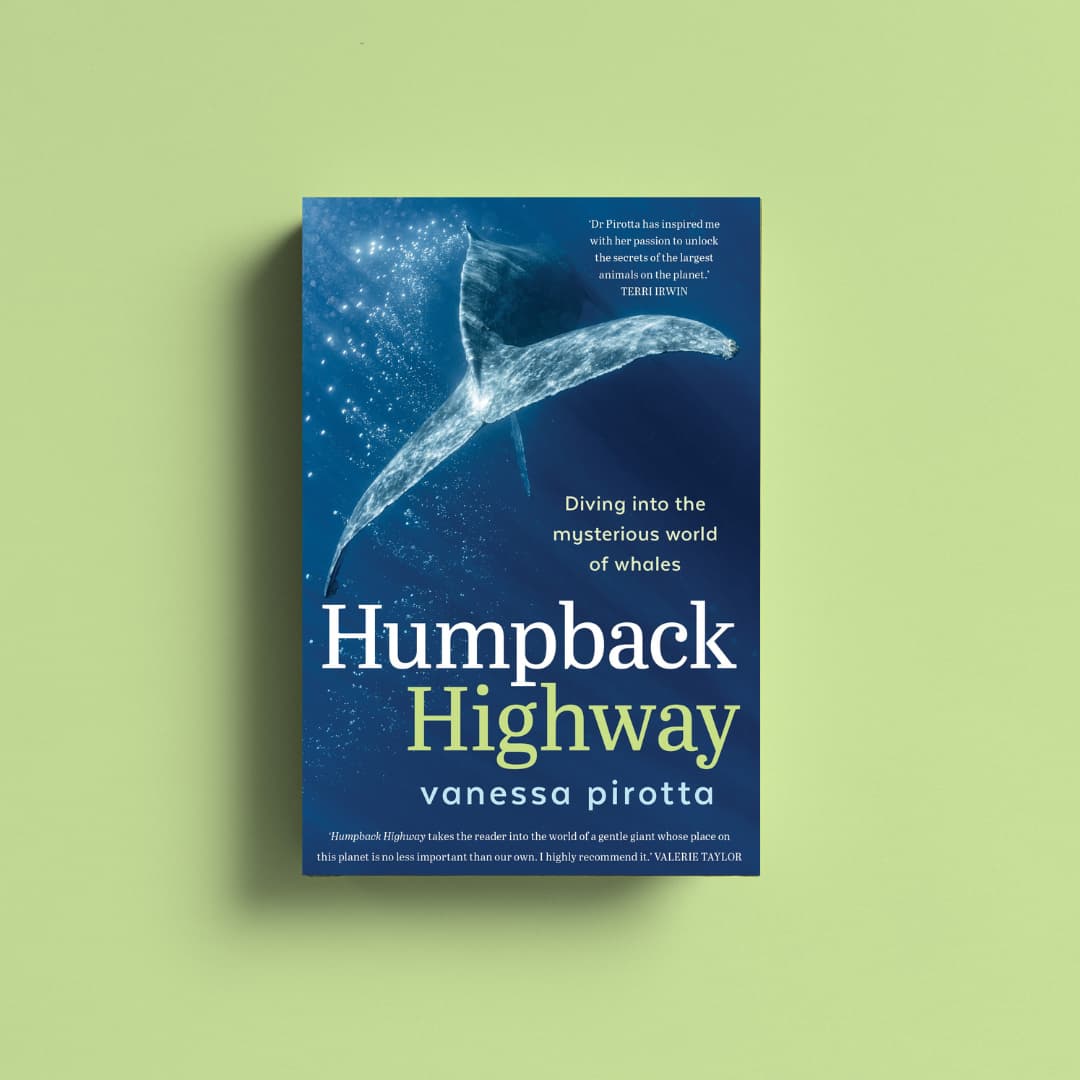
Dr. Vanessa Pirotta
Dr. Vanessa Pirotta is a wildlife scientist, woman in STEMM/STEAM, science communicator, author and vessel operator.
Vanessa’s research uses innovative technologies for wildlife conservation. Vanessa works collaboratively across both marine and terrestrial environments merging cutting edge tech to access animals in unique ways. Most notable works include drones to collect whale snot and the use of computer algorithms and AI for the detection of illegal wildlife trafficking.
Q&A with Vanessa Pirotta
Education is at the forefront of your endeavours; how do you try to articulate the seemingly ever-growing world of science and biology to young minds?
I LOVE education and sharing knowledge across all demographics. It is so important that in additions to kids, even mums, dads and grandparents are connected with when sharing science. I always think back to when I was a young farm kid growing up and loving animals. I remember the things that excited me and through my work, I try to re create this, whether it be through my books, on social media or amazing platforms like Play School. Passion for what I do started at a young age and to be able to make science accessible in the many ways children learn today has been key for what I do. Breaking the science down into relatable chunks of fun pieces of information is at the heart of what I do as a scientist.
Your role in collecting whale snot and developing non-invasive research methods was ground-breaking. To you, what was the most interesting data you pulled from this research experience?
Thank you! This research is very much collaborative team effort, and together we have only solved a small piece of the puzzle in understanding whale health. There is so much more to do. The thing that I find most interesting is being able to collect some of the
smallest organisms on earth (bacteria and viruses) from one of the biggest animals on the planet. Whales are swimming laboratories of ocean health that we can sample to learn more about remote places like Antarctica by collecting their snot off Bondi Beach. Changes in whale populations may be reflective of changes in our marine environment. This is why it is so important we continue to learn more about these marine giants in a changing world.
The sample collection footage (with ABC for the Southern Ocean LIVE Event) was unbelievable. Your passion for your research, and your connection to the whales is undeniably strong. Can you put into words how it felt in that moment to see these beautiful creatures up so close?
I absolutely loved that experience. To have captured that moment on the big screen was something special. That was the very moment I can use to help people understand just how remarkable and surprising these marine giants are. From having these two whales go about their day and then to appear out of the blue from the depths, two giant school buses right there underneath our boat. I had tears in my eyes, its one of the most beautiful things to see. I have the link up on my website for those who would like to see it.
With habit degradation and climate change underway, how does the future of the humpback highway look?
The humpback highway is busier than ever now that Australian humpback whales are not being killed deliberately. This is a good thing but as scientists, much of our time is trying to ensure we manage human activities and the presence of whales in Australian waters each year. How do we ensure the whales have a safe journey to the whale disco (the warmer water breeding grounds) and back again to Antarctica to feed over the summer. I feel cautiously optimistic but we unfortunately, will continue to see whales entangled in fishing gear, struck by ships, exposed to acoustic pollution and rubbish. Perhaps climate change may see changes in the timings of when whales decide to migrate. We need to continue our research efforts to learn more about the threats we as humans present to recovering whale populations and this is why it is so important for the general public to learn why whales are important to us all via my book.
I chose to write Humpback Highway to serve as an annual resource for people to dive deeper to understanding why they see whales in their blue backyard at certain times of the year. This is why I also wrote The Voyage of Whale and Calf for kids- this is a great resource for kids annually. I also run Wild Sydney Harbour, a citizen science program designed to connect people with the marine creatures in Sydney Harbour. Sometimes whales make the detour off the humpback highway into Sydney Harbour and may wave hello! Let us know if you see them, or the fur seals or dolphins.
What’s the one thing in your book that you're hoping readers will take away from it?
A deeper understanding and appreciation of whales and their role in the marine environment. Whales feed in one area and poo in another, fertilizing our ocean. They are also long lived and store carbon in their bodies. This is fascinating and ironically after writing a whole book about them, we hardly know much about them. I hope people are fascinated like me. I also want people to know that while this book is for adults, it’s also a great read for ages 13 and up to act in service as a STEM/STEAM book for young minds to be inspired by the science and natural world. I also think nurses and midwives would find the chapter about whale motherhood and babies fascinating.

Humpback Highway by Vanessa Pirotta
I entered the water quietly and saw two humpback whales sleeping diagonally in the distance. Two school buses just hanging in space…
Acclaimed wildlife scientist Vanessa Pirotta has been mugged by whales, touched by a baby whale and covered in whale snot. In Humpback Highway, Pirotta dives beneath the surface to reveal the mysterious world of humpback whales — from their life cycle and the challenges humans present, to why whale snot and poo are important for us and the ocean. Plus the cutting-edge new technologies that allow us to see where they swim, listen to them talk and spy on them underwater.
